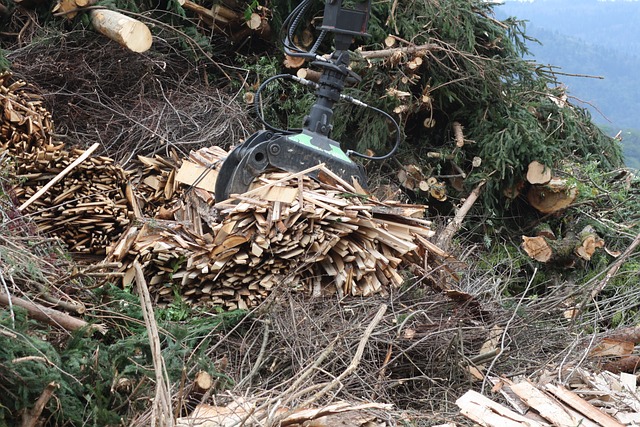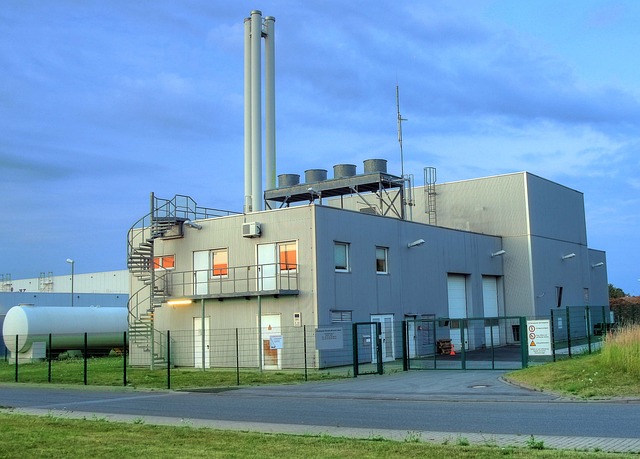
Biomass energy is a renewable source of energy that is derived from organic materials such as wood, plants, agricultural waste, and other organic matter. Unlike fossil fuels, which are the result of millions of years of geological processes, biomass energy is organic matter that can be replenished naturally or through farming practices.
Benefits of Biomass Energy
One of the primary benefits of biomass energy is that it is a carbon-neutral source of energy. When biomass is burned, it releases carbon dioxide into the atmosphere, but this process is offset by the fact that the plants and trees used to produce the biomass absorb carbon dioxide from the atmosphere during their growth. Therefore, the net effect on the environment is zero.
Another advantage of biomass energy is that it can generate power in a decentralized manner. Unlike large-scale power plants that rely on central grids to distribute electricity, biomass energy systems can be installed in rural areas, providing reliable energy to remote communities.
In addition to electricity generation, biomass can also be used to produce biofuels. Biofuels, such as ethanol and biodiesel, are made from renewable sources like corn, sugarcane, algae, and soybeans. These fuels are less polluting and have less impact on the environment owing to their renewable nature.
However, there are some challenges associated with the use of biomass energy. One of the primary concerns is the competition for land use. As the demand for biomass increases, there is a risk that it may lead to the conversion of natural habitats into land for agriculture or forestry. Another potential challenge is the cost of installation and operation of biomass energy systems, which can be more expensive when compared to traditional fossil fuel-based systems.
Biomass Sources
When it comes to harnessing the power of biomass energy, the key lies in the diverse range of organic materials that can serve as feedstocks. From agricultural residues and forestry by-products to energy crops and even microscopic algae, nature offers us an abundance of sources to tap into. Each biomass source brings its own unique characteristics and potential applications, making biomass energy a versatile and renewable resource for a greener future. Let’s take a closer look at some of these extraordinary biomass sources and their role in shaping a sustainable world.
Biomass Feedstocks
Biomass energy is derived from a wide range of organic materials. These feedstocks can be categorized into various types, each with its own unique properties and suitability for energy production. Let’s take a closer look at some of the most commonly used biomass sources:
Agricultural Residues:
Agricultural residues refer to the by-products remaining after the harvesting and processing of crops. These residues include crop stalks, straw, husks, and other plant materials. They are often abundant and readily available, making them a convenient source of biomass for energy generation.
Forestry Residues:
Forestry residues consist of the by-products generated during timber harvesting and processing. It includes wood chips, bark, sawdust, and branches that are left behind. These residues can be utilized effectively for biomass energy production, reducing waste from forestry activities.
Energy Crops:
Energy crops are specifically grown for the purpose of biomass energy production. These crops have high energy content and are cultivated on a large scale. Switchgrass, miscanthus, and hybrid willows are some examples of energy crops that are well-suited for biomass energy generation.

Organic Waste:
Organic waste materials, such as food waste and sewage, can be converted into biogas through a process called anaerobic digestion. Biogas is a versatile form of renewable energy that can be used for heating, electricity generation, and even as a vehicle fuel. Utilizing organic waste not only helps in waste management but also reduces greenhouse gas emissions.
Algae:
Algae are microscopic plant-like organisms that can grow rapidly and accumulate significant amounts of biomass. They have potential as a feedstock for biofuel production, specifically biodiesel. Algae cultivation requires less land space compared to traditional crops, making it a promising alternative for sustainable biofuel production.
Biomass Conversion Technologies
When it comes to harnessing the power of biomass energy, there are several conversion technologies that can be applied. These technologies range from the simple and traditional to the cutting-edge and innovative. Let’s explore some of the most common biomass conversion methods:
Combustion
Combustion is the most traditional and straightforward method of biomass conversion. It involves burning biomass in a combustion chamber, releasing heat energy. This heat can then be used directly for heating or converted into electricity through a steam turbine. Combustion is commonly used in biomass power plants to generate renewable electricity.
Gasification
Gasification is a more advanced form of biomass conversion that involves the partial combustion of biomass in a controlled environment. This process produces a syngas (synthetic gas) consisting of carbon monoxide, hydrogen, and other combustible gases. The syngas can be used for a variety of applications, including electricity generation, heat production, and as a feedstock for the production of fuels and chemicals.
Pyrolysis
Pyrolysis is a thermal decomposition process that converts biomass into biochar, liquid bio-oil, and syngas. Unlike gasification, pyrolysis occurs in the absence of oxygen, allowing for the production of different product streams. The biochar produced can be used as a soil amendment, the bio-oil can be further processed into transportation fuels, and the syngas can be used for heat or power generation.
Anaerobic Digestion
Anaerobic digestion is a biological process that converts organic waste, such as food waste and sewage, into biogas. The process occurs in an oxygen-free environment, where microorganisms break down the organic matter and produce methane-rich biogas.
This biogas can be used as a renewable fuel for heating, electricity generation, or as a vehicle fuel. Additionally, anaerobic digestion produces a nutrient-rich digestate that can be used as a natural fertilizer.

Fermentation
Fermentation is a process commonly used in the production of biofuels, such as ethanol. It involves the conversion of sugars found in biomass feedstocks, such as corn or sugarcane, into alcohol through the action of yeast or bacteria. The resulting bioethanol can be blended with gasoline or used as a standalone fuel in vehicles.
Hydrothermal Liquefaction
Hydrothermal liquefaction is an emerging biomass conversion technology that utilizes high temperatures and pressures in the presence of water to convert biomass into a biocrude oil. This biocrude oil can be further refined into transportation fuels or used as a feedstock for the petrochemical industry. Hydrothermal liquefaction has the advantage of being able to process a wide variety of feedstocks, including algae and wet biomass.
These biomass conversion technologies offer a range of options for utilizing different types of biomass feedstocks and converting them into valuable energy sources. The choice of technology depends on factors such as the feedstock availability, the desired end products, and the specific energy needs. By embracing these diverse conversion methods, we can tap into the full potential of biomass energy and pave the way for a sustainable and greener future.
Applications of Biomass Energy
Biomass energy has a wide range of applications, from electricity generation to transportation fuels and even heating systems. This versatile source of renewable energy offers numerous benefits and solutions to address our energy needs while offsetting carbon. Let’s delve into some of the main applications of biomass energy:
Electricity Generation
Biomass power plants produce electricity by burning biomass feedstocks, such as agricultural residues, forestry residues, and energy crops. The combustion process releases heat, which is used to generate steam. The steam then spins a turbine connected to a generator, producing electricity. Biomass power plants can be integrated into the existing power grid, providing reliable and renewable energy to communities.
Heating Systems
Biomass can be used as a direct heat source for residential, commercial, and industrial heating applications. Wood pellets, made from compressed sawdust and other woody biomass, are a popular choice for this purpose. Biomass heating systems, such as furnaces and boilers, provide efficient and environmentally friendly alternatives to traditional fossil fuel-based systems, reducing greenhouse gas emissions and reliance on non-renewable resources.
Biofuels
Biomass is a key feedstock for the production of biofuels, which are renewable alternatives to fossil fuels. Some commonly produced biofuels include ethanol and biodiesel. Ethanol is primarily made from fermenting sugars found in crops like corn and sugarcane. It can be blended with gasoline or used as a standalone fuel in flex-fuel vehicles. Biodiesel, on the other hand, is typically produced from vegetable oils or animal fats. It can be used in diesel engines with little or no modifications.
Biogas
Through the process of anaerobic digestion, biomass, particularly organic waste like food waste and sewage, can be converted into biogas. Biogas is a renewable energy source composed mainly of methane.
It can be used for heating, electricity generation, and as a vehicle fuel. Biogas can be captured from agricultural waste, landfills, and wastewater treatment plants, reducing methane emissions and providing a sustainable energy source.

Co-firing
One approach to reducing greenhouse gas emissions in traditional coal-fired power plants is through the co-firing of biomass and coal. By replacing a portion of coal with biomass, power plants can reduce carbon dioxide emissions and reliance on fossil fuels. Co-firing offers an immediate and cost-effective strategy to transition to a more sustainable energy mix.
Industrial Processes
Biomass energy can be utilized in various industrial processes, such as drying, evaporation, and heat-intensive operations. These processes are commonly found in industries like pulp and paper, food processing, and manufacturing. By incorporating biomass into the energy mix, industries can reduce their carbon footprint and decrease reliance on non-renewable energy sources.
Combined Heat and Power (CHP)
Combined heat and power systems, also known as cogeneration, provide simultaneous electricity and heat generation. Biomass can play a role in CHP systems, where the heat produced during electricity generation is captured and used for heating applications. CHP systems are highly efficient, utilizing the full potential of biomass feedstocks and maximizing energy output.
Challenges and Future Outlook
Land Use Competition
As the demand for biomass energy increases, there is a risk of competition for land use. This can lead to the conversion of natural habitats, such as forests and grasslands, into land for growing energy crops or establishing biomass plantations. Balancing the need for biomass feedstocks with the preservation of ecosystems and biodiversity is a challenge that requires careful planning and sustainable land management practices.
Cost Considerations
The installation and operation of biomass energy systems can be more expensive compared to traditional fossil fuel-based systems. This cost barrier makes it challenging for some communities and industries to adopt biomass energy technologies. However, ongoing technological advancements and economies of scale are helping to reduce costs and make biomass energy more economically viable in the long run.
Technological Innovation
The field of biomass energy is continually evolving, with ongoing research and development to improve conversion processes, increase energy yields, and optimize feedstock choices.

Breakthroughs in areas such as genetically engineered energy crops, advanced pyrolysis and gasification techniques, and enhanced anaerobic digestion processes hold promise for further advancing the efficiency and sustainability of biomass energy.
Infrastructure and Logistics
Biomass feedstocks are often bulky and require secure storage facilities and efficient transportation systems. Developing the necessary infrastructure, such as storage silos, biomass supply chains, and transportation networks, can be a logistical challenge, particularly in remote or rural areas that can benefit most from biomass energy.
Policy and Regulatory Frameworks
The development and widespread adoption of biomass energy require supportive policy frameworks and incentives. Governments and regulatory bodies play a crucial role in creating a favorable environment for biomass energy investments, providing financial incentives, and establishing standards and regulations to ensure sustainability and environmental stewardship in biomass production and utilization.
Public Perception and Awareness
Biomass energy is still relatively new compared to conventional energy sources, and there may be a lack of public awareness and understanding of its potential benefits. Educating the public about the advantages of biomass energy, such as its renewable nature and carbon-neutral attributes, can help foster acceptance and support for its widespread adoption.
In the future, biomass energy holds great potential as a sustainable and renewable energy source. Advancements in biomass conversion technologies, along with the integration of other renewable energy sources, can contribute to a diversified and resilient energy system. As society strives to reduce greenhouse gas emissions and mitigate climate change, biomass energy can play a crucial role in achieving a greener future.
